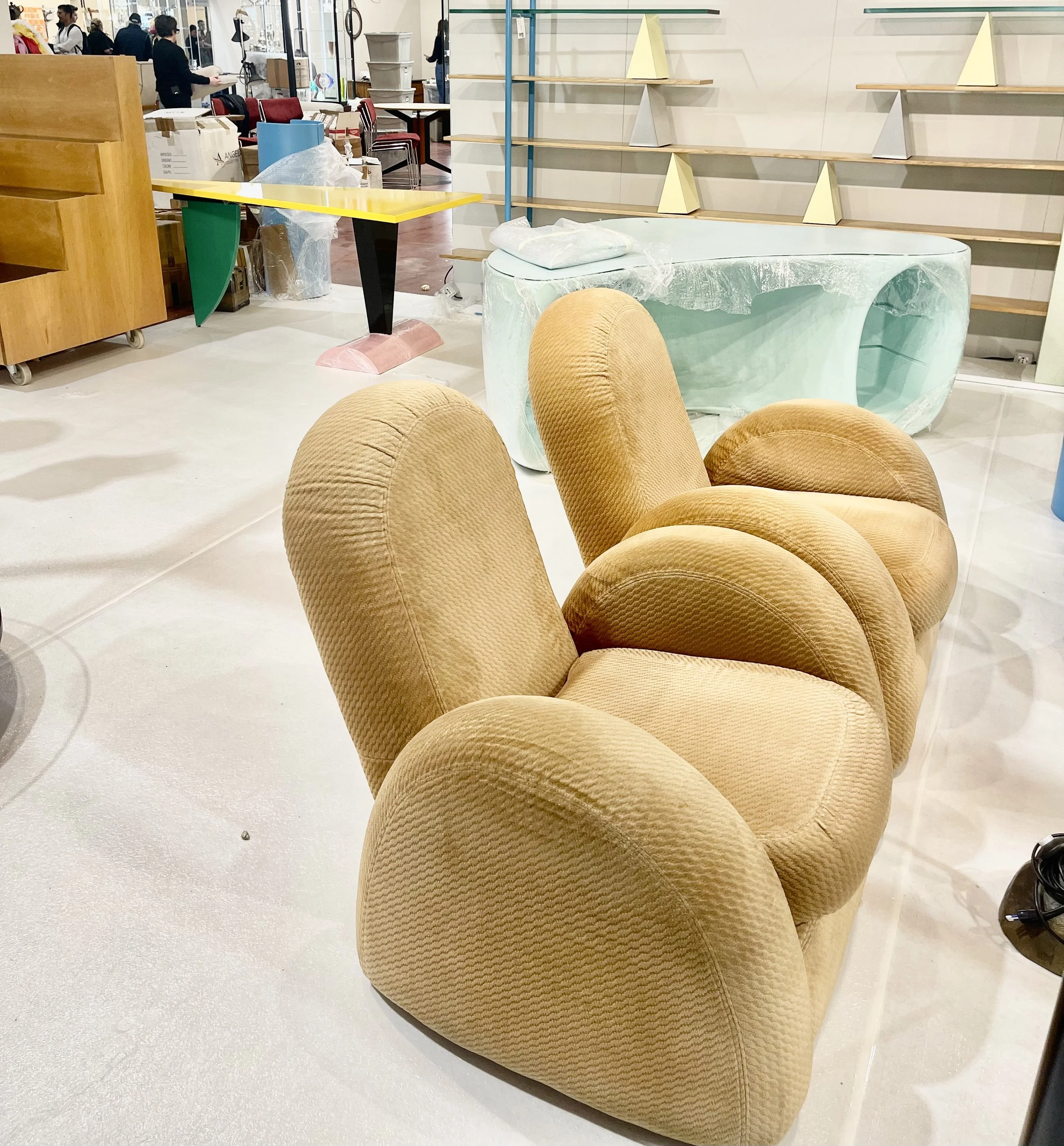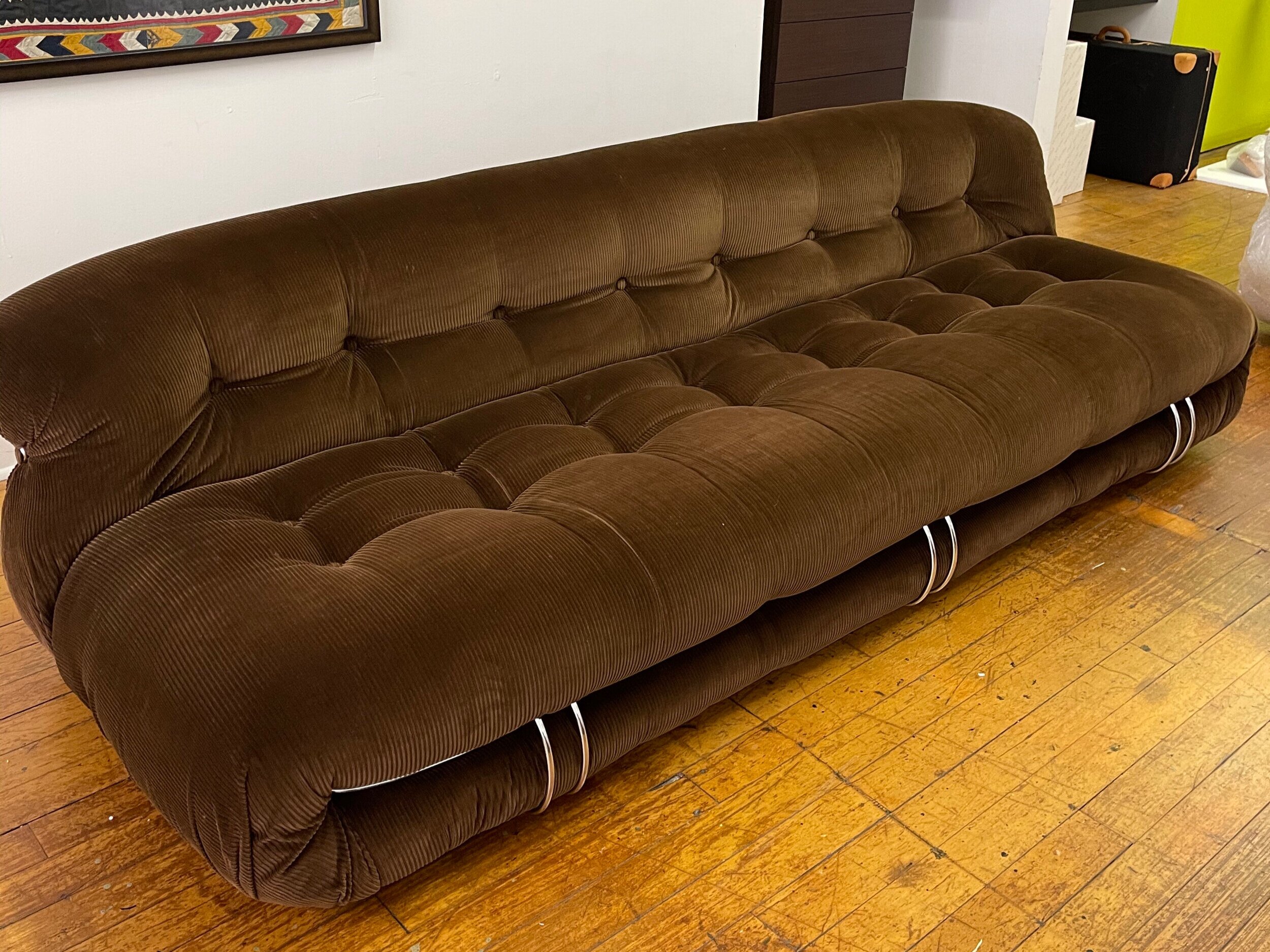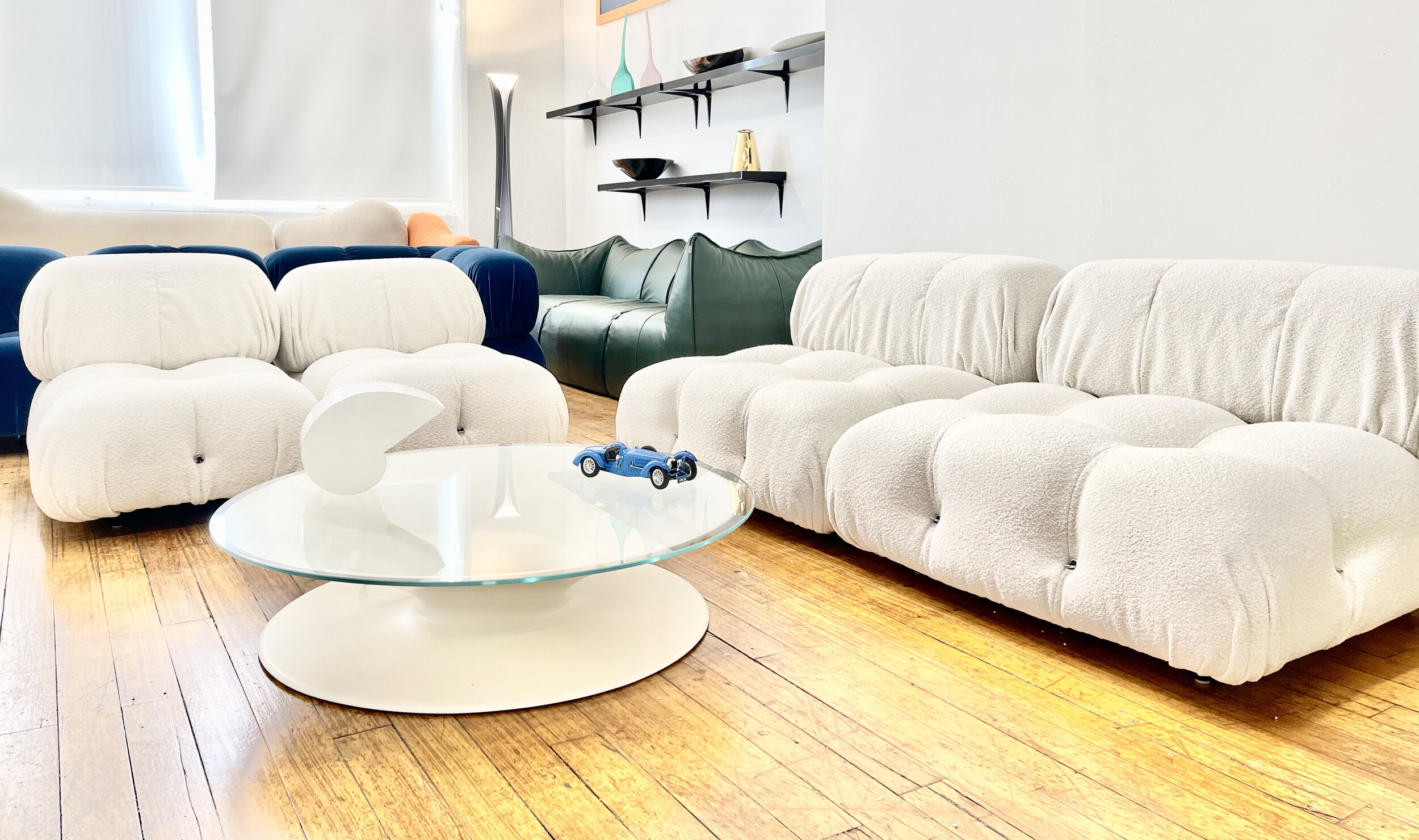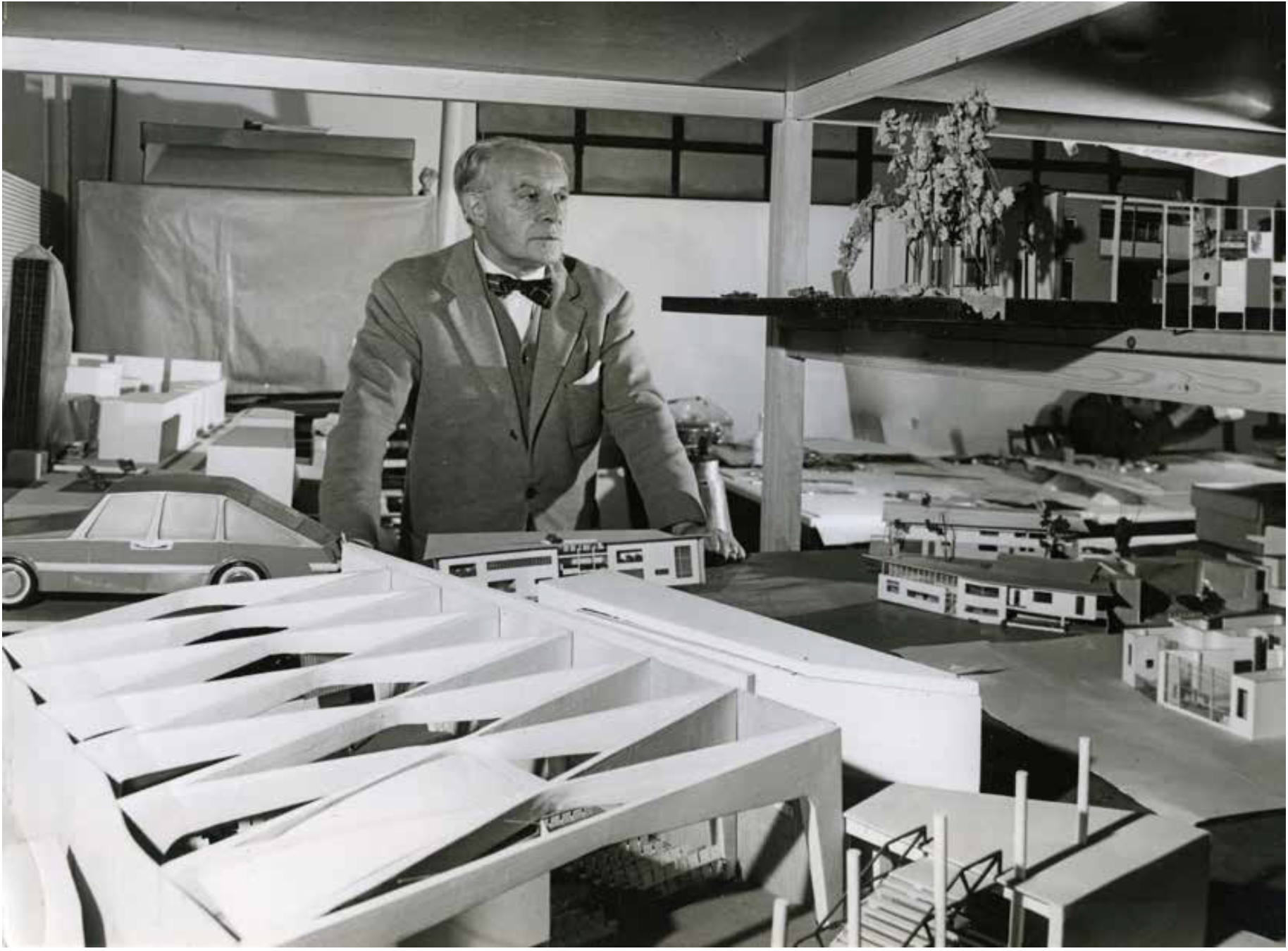The Georgia Museum of Art has just announced a new exhibition dedicated to one of the greatest designers of the 20th century – Gio Ponti. The show, “Modern Living: Giò Ponti and the 20th-Century Aesthetics of Design”, will present more than 50 objects borrowed from American museums and private collections, representing some of Ponti’s most outstanding pieces of furniture and decorative objects starting from the beginning of his career in the 1920s through the 1950s. The museum will also publish a fully illustrated exhibition catalog, the first major work in English on Ponti's career.
Giò Ponti in his studio, Via Dezza, Milan, 1950s. Courtesy: Giò Ponti Archives.
Giò Ponti (Italian, 1891–1979)
Scrolled chair from the Contini Bonacossi residence, Florence, 1931
Made by Mario Quarti
Italian walnut and leather
Private collection
Gio Ponti was much more than a designer of objects although he did begin his storied career collaborating with Richard Ginori, creating designs and motifs of classical inspiration through porcelain decorative art. He became a designer and architect present on every continent, taught for 25 years at the Faculty of Architecture in Milan, was the director of Design Domus magazine, creator of the famous Compasso D'Oro award, curator of the Triennale of Milan, and a painter. Essentially he was always ahead of his time and calling him a designer, when this word was not yet in vogue in his times, would seem too reductive.
Ponti was an early proponent of industrial design when this concept was still in its infancy. His works are immediately recognizable by their weightless design and extreme functionality and yet imbued with a fundamental aesthetic and craftsmanship that he had refined in collaboration with the 20th-century Italian master artisans – the aforementioned Richard Ginori and Fornasetti. And no work captures that ethos better than his quintessential masterpiece- the Pirelli skyscraper, the first skyscraper in Italy and an ode to simplicity distributed over 32 floors (1956).
Above all, for Italy, he was the first true cultural promoter of Italian aesthetics throughout the world. Architecture, design, and art are the foundations of this great artist, inspired by the great movements of the twentieth and nineteenth centuries, Futurism, Impressionism and, as Gio Ponti himself said, classical music.
Giò Ponti (Italian, 1891–1979)
Display cabinet, model 2140, 1951
Made by Singer & Sons
Italian walnut, lacquered wood and brass 79 x 81 x 18 inches
Museum of Fine Arts, Houston. Museum purchase funded by the John R. Eckel Jr. Foundation, 2016.145.A-B
Observing historical images of Ponti at 85 years old, coming down from his apartment in Milan to work at his architecture studio means witnessing the enthusiasm of a man who looked to the future and who conceived modern architecture as a form of functional art whose purpose was to serve the community, a man who believed that perfect architecture has yet to be designed. His was a continuous search for the ultimate concept of the ‘Italian abode’, which in his view would have to be a ‘living’ and versatile environment, adaptable to the constant changes of a modern person’s life but, above all, exempt from any functional space constraint and nonessential form. As a matter of fact, his home in Milan was the perfect representation of his ideas: a series of spaces divided into different interchangeable rooms where there should have been no set bedroom, living room, or dining room area but a modular ever-changing simple space. He said that one should boast of the simplicity of one’s own home because that is where you find your peace. He also created the "Finestra Arredata" where glass windows were equipped with shelves and modular elements so they could be functioning as windows as well as usable room walls.
Among the furnishing objects he designed, we cannot help but recall the "Leggera Chair" and later the Superleggera manufactured by Cassina and still in production today, or the "La sedia di Poco Sedile" a chair with a shallow seat and a wide, comfortable, backrest. And of course, the Pavoni coffee machine, the Venini lamps, Ginori pottery, and Fornasetti furniture, and all his amazing buildings around the world.
EXHIBIT INFO:
Modern Living: Giò Ponti and the 20th-Century Aesthetics of Design
JUNE 10, 2017 - SEPTEMBER 17, 2017
Giò Ponti (Italian, 1891–1979)
Desk, 1938
Fruitwood, reverse-painted glass, and brass 31 x 53 x 26 1/2 inches
Private collection
Giò Ponti (Italian, 1891–1979)
Desk from the Societa Vetrocoke Building, Milan, ca. 1939
Vitrex glass, laminate, Italian walnut, enameled steel and brass



































